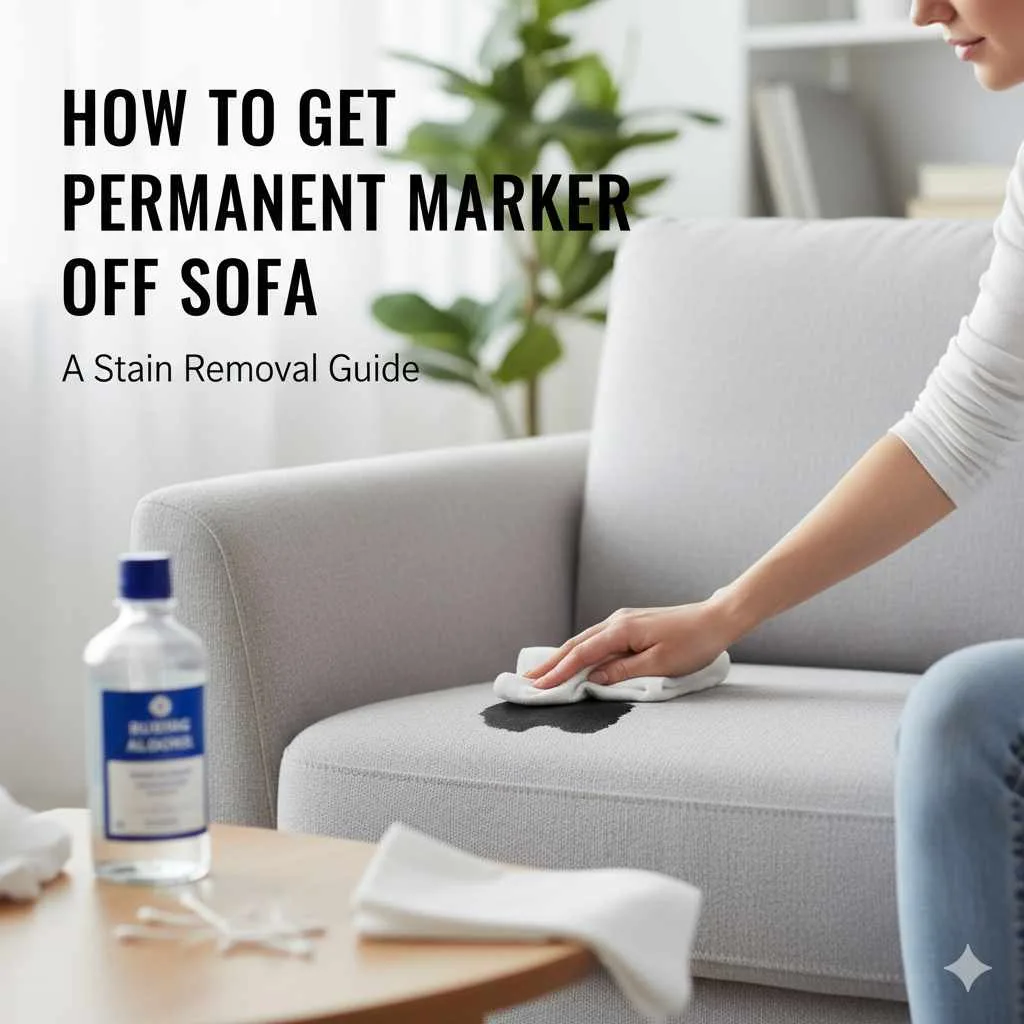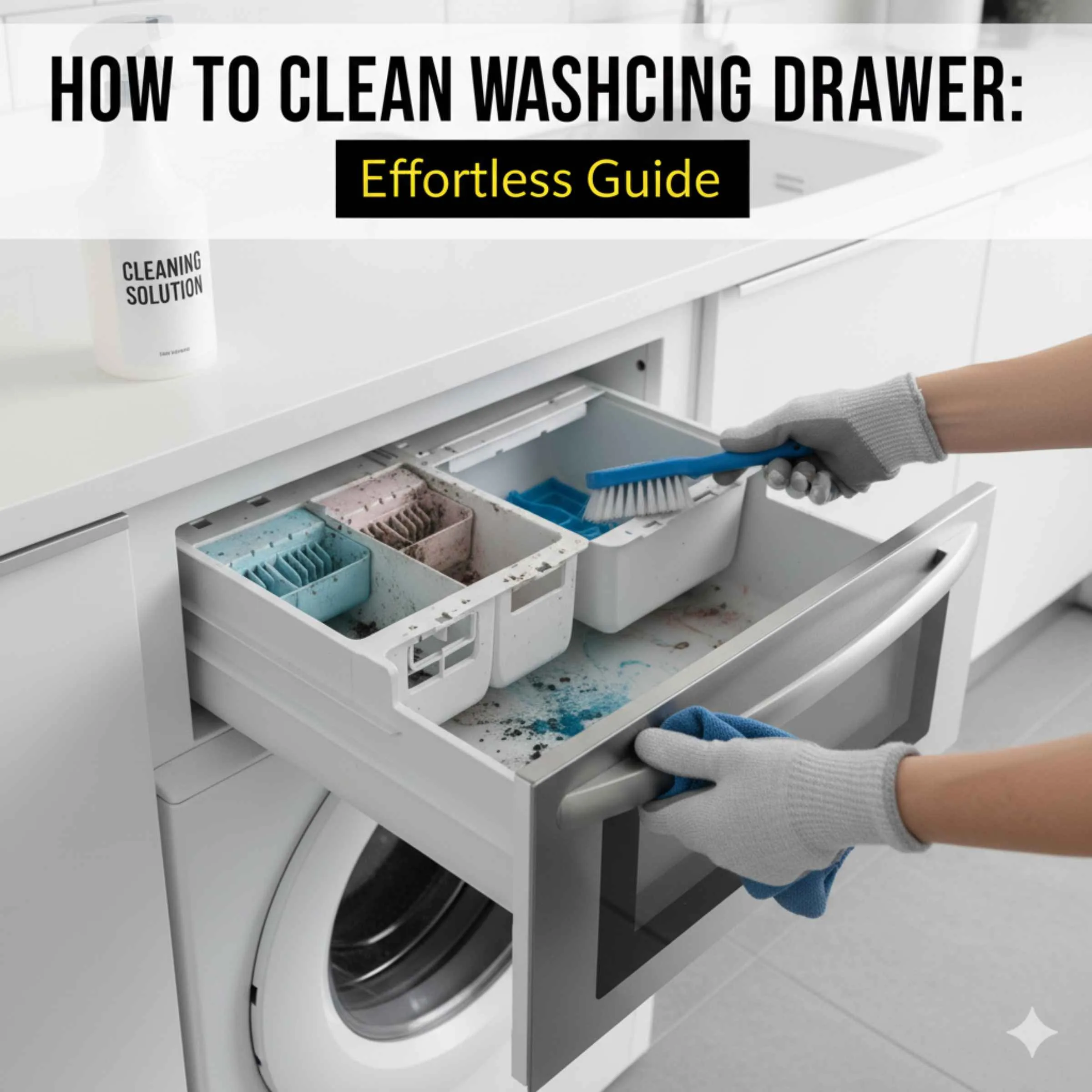Quick Summary: Easily remove permanent marker from your sofa using common household items like rubbing alcohol, toothpaste, or hairspray. These methods are gentle on most fabrics and provide effective solutions to salvage your furniture. Start with the mildest option and always test in an inconspicuous area first.
Oh no! A rogue permanent marker has found its way onto your beloved sofa. It’s a moment that can send a shiver down any homeowner’s spine. Before you despair, know that this is a common and surprisingly solvable problem. With a few simple steps and common household items, you can often restore your sofa to its former glory. I’m here to guide you through the process, making it feel less like a disaster and more like a little home rescue mission. Let’s dive in and tackle that pesky marker stain together!
The Unwelcome Guest: Understanding Permanent Marker Stains
Permanent markers are designed to… well, be permanent! That’s why they’re so useful for labeling and crafting. However, this permanence is exactly what makes them so daunting when they land on upholstery. The ink is formulated to bond strongly with surfaces, making it challenging to remove. Different sofa materials also react differently to cleaning attempts, which is why a one-size-fits-all approach usually doesn’t work and can sometimes even make the stain worse. But don’t worry, with the right techniques and a bit of patience, you can often lift that mark without damaging your sofa’s fabric.

Your Sofa’s Best Friends: Essential Stain-Fighting Supplies
The good news is you likely already have most of the tools you need in your home. No need for expensive specialty cleaners or professional intervention just yet! These everyday items are your secret weapons against permanent marker.
- Rubbing Alcohol (Isopropyl Alcohol): This is often the most effective and readily available solution. Its strong solvent properties help break down the ink.
- Hairspray: Look for an aerosol hairspray containing alcohol. The alcohol content is the key ingredient here.
- Non-Gel Toothpaste: White, non-gel toothpaste can act as a mild abrasive.
- Baking Soda: When mixed with water or other agents, it can form a paste that helps lift stains.
- Dish Soap: A gentle detergent can help lift ink particles.
- White Vinegar: Its acidic nature can sometimes help break down inks.
- Cotton Balls or Swabs: For precise application and dabbing.
- Clean White Cloths or Paper Towels: Essential for blotting and absorbing the ink as it lifts. Always use white to avoid color transfer from the cloth itself.
- A Small Bowl: For mixing cleaning solutions.
- Gloves: To protect your hands from the cleaning solutions.
- Water: For rinsing and diluting.
- A Soft Brush (like an old toothbrush): For gently working in cleaning solutions.
Safety First! Always Test in an Inconspicuous Area
Before you tackle the main stain, it’s crucial to test your chosen cleaning solution on a hidden part of your sofa. This might be the back, underneath a cushion, or inside a skirted hem. Apply a small amount of the cleaner to the fabric using a cotton swab and let it sit for a minute or two. Then, gently blot it with a clean white cloth. Check the cloth for any ink transfer and inspect the sofa fabric for any discoloration, damage, or adverse reactions. This simple step can save you from a much bigger headache down the line. If the fabric appears to be damaged or discolored, consult a professional upholstery cleaner.
The Step-by-Step Guide: Tackling the Marker Stain
The best approach is to start with the gentlest methods and gradually move to stronger ones if needed. Patience is key!
Method 1: The Rubbing Alcohol Method (Often the Most Effective)
Rubbing alcohol is frequently the go-to for permanent marker stains due to its solvent properties. It’s excellent for many synthetic fabrics and even works on some natural ones, provided you test first!
- Prepare: Gather your rubbing alcohol, cotton balls/swabs, and clean white cloths.
- Dampen: Lightly dampen a cotton ball or swab with rubbing alcohol. You don’t want it dripping, just moist.
- Blot, Don’t Rub: Gently blot the marker stain with the dampened cotton ball. Start from the outside of the stain and work your way inward. This prevents the stain from spreading. As the ink transfers to the cotton ball, switch to a clean one to avoid reapplying ink.
- Watch and Wait: You should start to see the ink lifting onto the cotton ball. Be patient; this may take several passes.
- Absorb: Once you’ve lifted as much ink as possible, use a clean, dry white cloth to blot the area and absorb any remaining moisture and ink residue.
- Rinse (Optional but Recommended): Lightly dampen another clean cloth with plain water and gently blot the area to rinse away any alcohol residue.
- Dry: Blot the area with a dry cloth and allow it to air dry completely. Avoid using heat, as this can set any remaining stain.
Method 2: The Hairspray Hustle
If you don’t have rubbing alcohol handy, many aerosol hairsprays can do the trick, thanks to their alcohol content. Make sure it’s an aerosol spray and not a pump, and check the ingredients for alcohol.
- Spray Lightly: Lightly spray the marker stain with the aerosol hairspray. Don’t drench the fabric.
- Let it Sit: Allow the hairspray to sit on the stain for about 5-10 minutes.
- Blot Gently: Using a clean white cloth or paper towel, gently blot the stain. You should see the ink starting to transfer.
- Repeat if Necessary: As with rubbing alcohol, use clean sections of the cloth or fresh paper towels as ink transfers. You might need to reapply hairspray a couple of times.
- Rinse: Once the ink is mostly gone, use a damp cloth (with just water) to blot the area and remove the sticky residue from the hairspray.
- Dry: Pat the area dry with a clean, dry cloth and let it air dry.
Method 3: Toothpaste Tune-Up (For Fabric Types That Can Handle Mild Abrasion)
This method uses non-gel, white toothpaste as a mild abrasive. It’s best for durable fabrics and should be used with caution on delicate materials.
- Apply Toothpaste: Squeeze a small amount of white, non-gel toothpaste directly onto the marker stain.
- Gentle Scrub: Using a soft-bristled brush (like an old toothbrush) or a damp cloth, gently scrub the stain in a circular motion. Don’t scrub too hard, as this can damage the fabric.
- Let it Sit: Allow the toothpaste to sit on the stain for about 10-15 minutes.
- Wipe Away: Dampen a clean white cloth with water and wipe away the toothpaste and the lifted ink.
- Rinse: Use another clean, damp cloth to rinse the area thoroughly, ensuring all toothpaste residue is removed.
- Dry: Blot with a dry cloth and allow to air dry.
Method 4: Baking Soda Paste Power
Baking soda is a natural cleaner and deodorizer that can help lift stains.
- Make a Paste: Mix baking soda with just enough water to form a thick paste. You can also try mixing it with a small amount of mild dish soap for added cleaning power.
- Apply Paste: Apply the paste directly onto the marker stain, covering it completely.
- Let it Work: Allow the paste to sit for 15-30 minutes, or until it dries.
- Gently Remove: Use a soft brush or a damp cloth to gently brush away the dried paste.
- Wipe and Rinse: Use a damp cloth to wipe away any remaining residue, then rinse the area with another clean, damp cloth.
- Dry: Blot with a dry cloth and let it air dry.
Choosing the Right Method for Your Sofa Fabric
The material of your sofa is a critical factor in how well these methods will work and what precautions you need to take. Always check your sofa’s care tag if you can find it. It usually has a cleaning code. Here’s a general guide:
| Fabric Type | Best Cleaning Agents | Cautionary Notes |
|---|---|---|
| Synthetic Fabrics (Polyester, Nylon, Olefin) | Rubbing alcohol, hairspray. Dish soap and water can also be effective. | Generally durable, but always spot-test. Alcohol is usually safe. |
| Cotton and Linen | Rubbing alcohol (test carefully), diluted white vinegar, mild dish soap. | Can be more absorbent and prone to water stains. Rubbing alcohol should be used sparingly and blotted immediately. Avoid harsh scrubbing. |
| Microfiber | Rubbing alcohol is often recommended for oil-based stains like permanent marker. Check manufacturer guidelines if available. | Some microfiber can be cleaned with water (W code), but many require solvent-based cleaners (S code). Alcohol is often a safe solvent choice. Always blot; don’t saturate. |
| Leather | Mild soap and water (for some finishes), specialized leather cleaner, rubbing alcohol (very sparingly and tested). | Leather is delicate. For dyed leather, alcohol can remove dye. For finished leather, a very light application on a swab can work, followed by immediate conditioning. For raw or unfinished leather, consult a professional. A good resource for leather care is the Leather Industries of America (LIA), which offers comprehensive care advice. |
| Velvet (Synthetic or Silk) | Specific velvet cleaners, or very diluted rubbing alcohol sparingly applied with a swab. | Very delicate. Avoid over-wetting, rubbing, or harsh chemicals. Test extensively. Sometimes professional cleaning is the safest bet. |
Remember, if your sofa has a cleaning code, it’s your best guide:
- W: Water-based cleaner only.
- S: Solvent-based cleaner only.
- WS: Water-based or solvent-based cleaner.
- X: Vacuum only (no liquid cleaners). If you have an ‘X’ code and a marker stain, unfortunately, you’ll likely need professional help as removing it yourself risks permanent damage.
Dealing with Set-In Stains and Stubborn Marks
Sometimes, a stain has been there for a while, or the ink has really bonded with the fibers. Here’s how to approach those tougher cases:
- Repeat Treatments: For stubborn marks, you may need to repeat your chosen cleaning method more than once. Allow the fabric to dry completely between attempts.
- Slightly Stronger Solution: If rubbing alcohol isn’t fully working, you can try a very mild mixture of dish soap and water or diluted white vinegar. Always test these new solutions in an inconspicuous spot first!
- The Power of Patience: Don’t rush the process. Gently blotting and allowing solutions to work gradually is more effective than aggressive scrubbing, which can damage the fabric and spread the stain.
- Consider a Commercial Upholstery Cleaner: If home remedies aren’t cutting it, and you’ve confirmed your fabric type can handle it, a reputable commercial upholstery stain remover specifically designed for ink or marker stains might be your next step. Always follow the product instructions carefully and test first.
When to Call in the Pros
While these DIY methods are effective for many situations, there are times when it’s best to seek professional help. If:
- Your sofa is made of delicate or antique fabric.
- Your sofa has an ‘X’ cleaning code.
- You’ve tried multiple methods with no success, or you observe fabric damage.
- The stain is very large or has spread significantly.
- You simply aren’t comfortable risking damage to your furniture.
Professional upholstery cleaners have specialized tools and solutions that can tackle difficult stains safely and effectively. The International Down and Feather Laboratory (IDFL) provides a comprehensive fabric care guide that can help you understand different material properties, which might be useful before contacting a professional.

Frequently Asked Questions About Removing Permanent Marker from Sofas
What is the fastest way to get permanent marker off a sofa?
The fastest method is typically using rubbing alcohol. Apply it to a cotton ball, blot the stain gently, and switch to clean swabs as ink transfers. Blotting helps lift the ink quickly without spreading it.
Can I use nail polish remover on my sofa?
Nail polish remover (acetone) is a strong solvent and can be very effective, but it can also damage or discolor many upholstery fabrics, especially synthetics and dyed materials. It’s best to avoid it unless you’ve thoroughly tested it on an inconspicuous area and are certain it won’t harm your sofa. Rubbing alcohol is a much safer first choice.
Will hairspray damage my sofa fabric?
Aerosol hairspray, when used sparingly and blotted quickly, is generally safe for most durable upholstery fabrics. However, it can leave a residue, so rinsing the area with a damp cloth afterwards is important. Always test in a hidden spot first to ensure it doesn’t cause discoloration or damage.
Is it better to blot or rub a permanent marker stain?
It is always better to blot a permanent marker stain. Rubbing can spread the ink further into the fabric fibers, making the stain larger and harder to remove. Blotting gently lifts the ink from the surface without pushing it deeper.
What should I do if the marker stain is on a light-colored sofa?
For light-colored sofas, you need to be extra careful to avoid re-depositing ink or causing discoloration. Rubbing alcohol is often still the best bet. Be meticulous about using clean cotton balls or cloths with each pass so you don’t transfer ink back. If the stain persists, consider a professional cleaner to avoid making it worse.
How can I prevent permanent marker accidents on my sofa in the future?
The best prevention is to keep markers away from seating areas, especially when children are present. Designate a specific crafting area away from furniture. If you must use markers near the sofa, place a protective sheet or old towel underneath your project, and supervise younger family members closely.
A Beautiful Home is a Resilient Home
Life happens, and sometimes that means a stray mark on the furniture. But as we’ve seen, a permanent marker mishap doesn’t have to be permanent. With these straightforward methods and a little bit of care, you can tackle those ink stains with confidence and restore your sofa to its cozy, stylish best. Remember to always test, be patient, and choose the method that best suits your sofa’s fabric. You’ve got this! Your home is a reflection of you, and with a little effort, it can continue to be a beautiful and welcoming space, free from unwanted artwork.








Leave a Reply